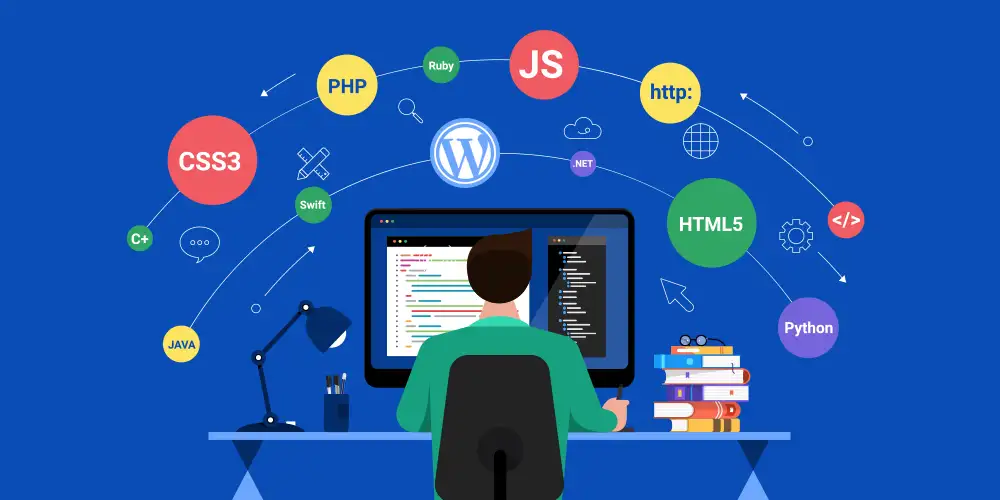How to Become a WordPress Developer in 2025
How to Become a WordPress Developer in 2025

WordPress powers over 40% of websites on the internet, making it one of the most popular platforms for web development. Becoming a WordPress developer is a rewarding career choice in 2024, offering opportunities to create websites, build custom themes, develop plugins, and contribute to the open-source community.
Whether you’re starting from scratch or looking to level up your skills, this guide will walk you through the steps to becoming a successful WordPress developer in 2024.

WordPress powers over 40% of websites on the internet
Step 1: Understand What WordPress Development Involves
Before diving in, it’s essential to understand the different types of WordPress development roles:
- Theme Development: Creating custom designs and layouts for WordPress websites.
- Plugin Development: Building tools to extend WordPress functionality.
- Core Contribution: Improving WordPress by contributing to its open-source codebase.
- Full-Stack Development: Combining front-end and back-end development skills to build comprehensive WordPress solutions.
Quick Tip: Identify which area excites you the most and focus on it initially.
Step 2: Learn the Fundamentals of Web Development
WordPress development requires a solid foundation in core web development technologies:
Key Skills to Learn:
- HTML & CSS: For structuring and styling your website.
- JavaScript: To add interactivity and dynamic features.
- PHP: The primary programming language of WordPress.
- MySQL: For managing databases.
Resources to Start:
Quick Tip: Build small projects, like a basic HTML/CSS website, to solidify your skills.
Step 3: Master the WordPress Ecosystem
Once you understand web development basics, dive into the WordPress ecosystem.
Learn the Basics:
- Install and set up WordPress locally using tools like Local by Flywheel or XAMPP.
- Understand how WordPress themes and plugins work.
- Familiarize yourself with the WordPress admin dashboard.
Essential Topics to Explore:
- The WordPress Loop: The core mechanism for displaying content.
- Theme Hierarchy: How WordPress decides which template to use.
- Hooks and Filters: Tools for customizing WordPress functionality.
Quick Tip: Start by customizing existing themes to learn how WordPress works under the hood.
Step 4: Practice by Building Projects
The best way to learn WordPress development is by doing. Build real-world projects to sharpen your skills.
Project Ideas:
- Create a custom WordPress theme from scratch.
- Develop a plugin that solves a specific problem (e.g., a custom contact form).
- Build a portfolio website to showcase your skills.
Quick Tip: Contribute to open-source WordPress projects on GitHub to gain experience and collaborate with other developers.
Step 5: Learn Gutenberg and Block Development
Gutenberg, the block editor introduced in WordPress 5.0, is the future of WordPress. In 2024, mastering Gutenberg is essential for developers.
Key Topics:
- Create custom blocks using React, the JavaScript library Gutenberg is built on.
- Learn about block patterns and full-site editing (FSE).
- Explore the Block Editor Handbook on WordPress.org.
Quick Tip: Build simple custom blocks to get familiar with React and the Gutenberg API.
Step 6: Stay Updated with WordPress Trends
WordPress is constantly evolving, and staying updated is crucial. Here are some trends to watch in 2024:
- Full-Site Editing (FSE): Revolutionizing how themes and templates work.
- Headless WordPress: Using WordPress as a back-end CMS with modern front-end frameworks like Next.js or Gatsby.
- AI-Powered Plugins and Tools: Integrating AI for smarter functionality and content creation.
Quick Tip: Follow the Make WordPress blog and attend WordCamps to stay in the loop.
Step 7: Build Your Portfolio
As you gain experience, create a portfolio to showcase your work to potential clients or employers.
What to Include:
- Live links to projects you’ve completed.
- Screenshots or videos of your work.
- Testimonials from clients or collaborators.
Quick Tip: Use WordPress itself to build your portfolio. A custom-built portfolio site can demonstrate your skills.
Step 8: Market Yourself
To land clients or jobs, you’ll need to market yourself effectively.
Tips for Getting Started:
- Join freelance platforms like Upwork or Toptal.
- Build a strong LinkedIn profile highlighting your WordPress expertise.
- Contribute to the WordPress community by answering questions in forums or writing tutorials.
Quick Tip: Networking at WordPress meetups or WordCamps can open doors to new opportunities.
Step 9: Keep Learning
Web development is a rapidly changing field, and continuous learning is essential for staying relevant.
Advanced Topics to Explore:
- REST API: Learn how to create custom endpoints for your WordPress site.
- Security Best Practices: Protect your websites from vulnerabilities.
- Performance Optimization: Master tools like W3 Total Cache to improve site speed.
Quick Tip: Set aside time each month to learn something new, whether it’s a programming language or a WordPress feature.
Wrap Up
Becoming a WordPress developer in 2024 is a rewarding journey that combines creativity, problem-solving, and technical skills. By following these steps, you’ll be well on your way to building amazing websites, creating custom solutions, and carving out a successful career in the WordPress ecosystem.
Ready to get started? Begin learning today and join the vibrant WordPress developer community!
Would you like me to include additional graphics, videos, or links to recommended resources for this article?

